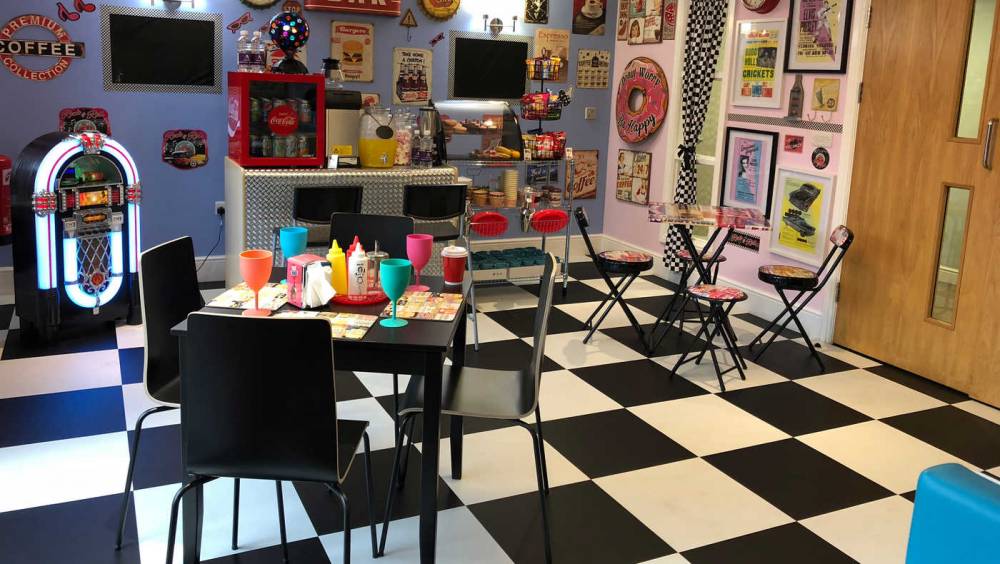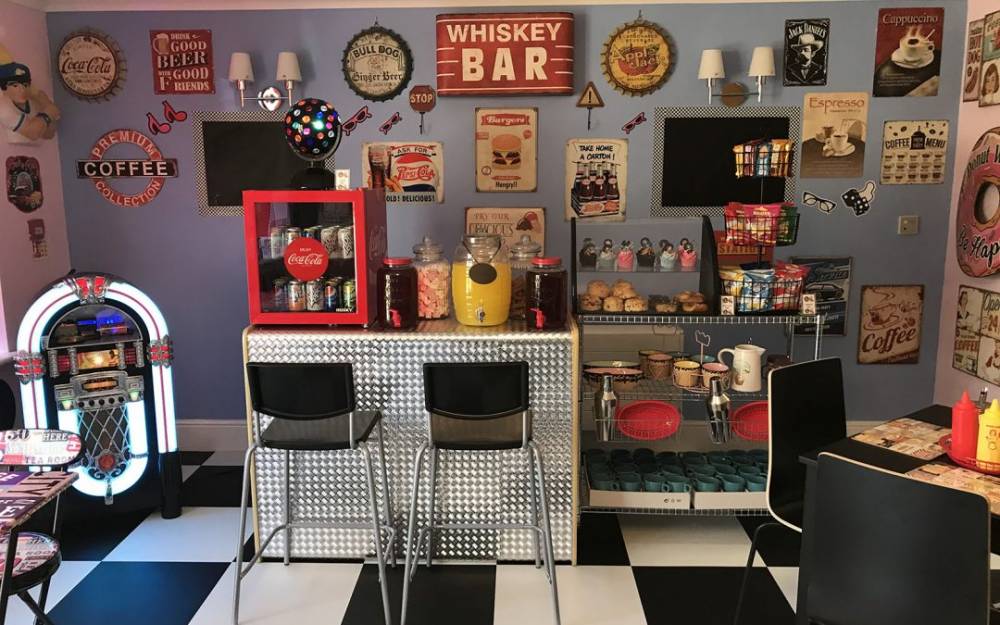
A British aged care home has opened a 1950s-style diner on site, with the intention of stimulating memories and conversations for residents who have dementia.
Residents of the Anchor – Mill View care home in Bradford, Yorkshire, are spoilt for choice. They already have a cinema on site, as well as a functioning corner shop, and now their dining room has been converted into their very own US-style diner.
Residents voted for which type of cafe they would like to have, and staff have been scouring auction sites and antique markets to find 1950s-style items to complete ‘the look’.
Elvis Presley himself opened the diner.
Staff say the project, which has been funded through community events, has been a ‘labour of love’.
The diner is an example of ‘reminiscence therapy’ – a way of connecting with people who are living with dementia that can help to improve their quality of life. By awakening long term memories, people who are living with dementia can engage with the people around them and be reminded of old times, even though their short term memory may have deteriorated.

The diner has been named The Pit Stop, and comes complete with leather booths, a 1950s barber chair, vintage jukebox, US-style gasoline pump, and milkshake machine. The diner will be used as a cafe, but will also accommodate individual reminiscence therapy sessions, where residents can talk about their memories from the 1950s.
Anchor – Mill View is a specialist dementia home, and houses 50 residents.
More than 400,000 people in Australia have dementia, and another 250 are joining the population every day.
Images: The Daily Mail.